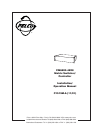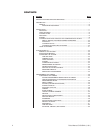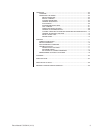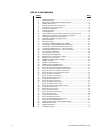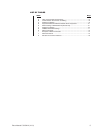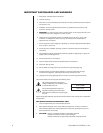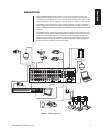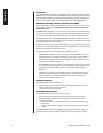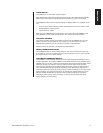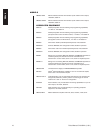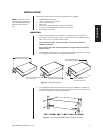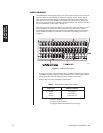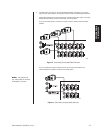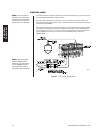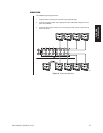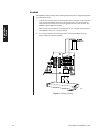
8 Pelco Manual C1515M-A (11/01)
KEYBOARDS
Up to 16 keyboards from the KBD100/200/300 Series and 2 keyboards from the KBD960/
KBR960 Series can be connected to the CM6800, allowing monitoring stations that share a
common monitor to each have a keyboard. Camera positioning can be programmed and
controlled from the KBD200/300 and KBD960/KBR960 Series keyboards. Keyboard types
can be mixed in a system. Refer to
Associated Equipment
for keyboard descriptions.
SEQUENCES, MACROS, PRESETS, PATTERNS, AND ZONES
Special programmed operations include sequences, macros, and camera control, such as
presets, patterns, and zones. All programming (except the scratchpad sequence) is
password-protected.
A sequence allows operators to see a routine of 72 camera views on any system monitor
over and over again. The sequence can be operated automatically or manually. The order
in which the camera views appear and the time each view remains can be programmed.
The CM6800 also provides a scratchpad sequence, which allows a sequence to be run
from an individual monitor. The scratchpad sequence can be accessed without entering the
password-protected programming menus.
A macro is a sequence of commands or steps. When a macro is run, the steps programmed
into that macro are performed. Macros can be operated automatically or manually. Automatic
operation can be based on specific times or dates.
The following operations are available only with positionable cameras:
A preset allows operators to direct a PTZ (camera positioning system) to move to a
predetermined scene on keyboard command or as a result of an alarm. In addition to
moving the camera, a descriptive title can appear on the screen. The number of
presets available is determined by the camera positioning system. (Presets are not
available with the KBD100 keyboard.)
With a pattern operators can program a camera positioning system to move around
its viewing area in a repeating pattern. The number and time length of patterns varies
with different positioning systems. (Patterns are not available with the KBD100
keyboard.)
A zone is a user-defined, physical location to which (1) a label is attached and (2) a
camera is associated. When the associated camera is panned through or remains
within this defined zone, the zone label appears on the monitor. (Zones are not
available with the KBD100 keyboard.)
INTERFACE CONTROL
The CM6800 interfaces with the following:
• Coaxitron
®
standard mode (15-bit) and extended mode (32-bit) protocol receivers
• Pelco’s D and P protocol receivers (RS-422)
• Pelco’s M protocol devices (RS-485)
PARTIONING AND PRIORITY
The CM6800 provides four ways to partition your system:
• Camera to Monitor: Cameras can be assigned to specific monitors for viewing.
• Keyboard to Monitor: Keyboards can be assigned to control specific monitors.
• Camera to Keyboard:
-Viewing: Keyboards can be assigned view-only access to specific cameras (no
PTZ control).
- Control: Keyboards can be assigned PTZ control and viewing access to specific
cameras.
The CM6800 provides eight levels of priority control. Each level defines the ability of a
keyboard to control a camera positioning system and to access programming screens.
Description



